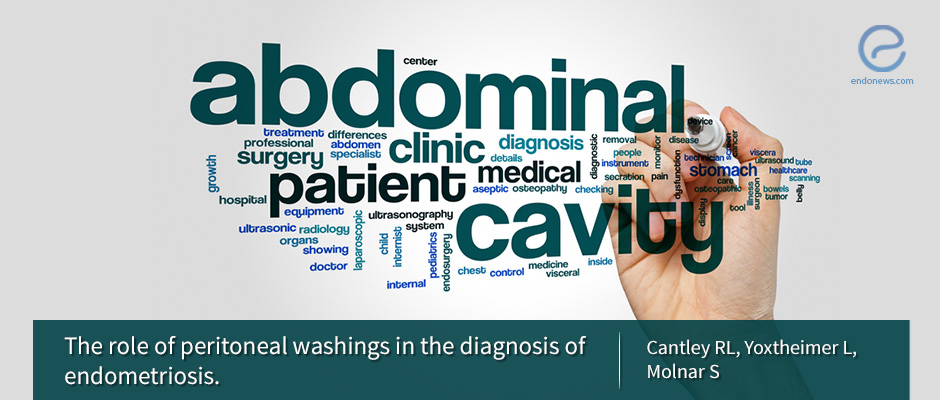The role of peritoneal washings in the diagnosis of endometriosis
Aug 14, 2018
Peritoneal washings may play an important role in the diagnosis of endometriosis.
Key Points
Highlights:
- Peritoneal washings may play an important role in the diagnosis of endometriosis.
Key Results:
- Pelvic washings increase the diagnostic yield for endometriosis at the time of gynecologic surgery.
- Abundant hemosiderin-laden macrophages may be a clue of the presence of endometriosis.
- Cell blocks particularly help the diagnosis of endometriosis, as pathologists can see intact glandular and stromal fragments.
What's done here:
- This study examined the characteristics of endometriosis in pelvic washings of 9 cases during surgery.
- The authors checked the cytomorphologic findings on liquid-based cytology and cell block.
- They also looked for the presence or absence of endometriosis in their surgical specimen, and the presence or absence of a known clinical history of endometriosis.
Lay Summary
Endometriosis is a common entity seen in the gynecologic tract and pelvic surfaces. It may be frequently asymptomatic and/or undiagnosed at the time of gynecologic surgery. Pathologists diagnose endometriosis based on the presence of at least two of the following elements: endometrial glands, endometrial stroma, and hemosiderin-laden macrophages.
Cantley R.L. et al. from the University of Toledo Medical Center, Toledo, Ohio, USA published an article entitled “The role of peritoneal washings in the diagnosis of endometriosis” in Diagnostic Cytopathology. They aimed to examine the characteristics of endometriosis in pelvic washings at the time of gynecologic surgery.
The authors searched the cases of endometriosis diagnosed by pelvic washing in their pathology archives for a period of 6 years. They considered endometriosis diagnosis correct if at least two of the following were present on ThinPrep or cell block material: glandular cells, endometrial stromal cells, and hemosiderin-laden macrophages.
They found 9 cases. They confirmed the diagnosis of endometriosis on peritoneal washings on re-review. In eight patients, the cell block was diagnostic of endometriosis. Glandular cells were the most commonly present element in the study, and stromal cells were frequently present in combination with glandular cells. Glandular nuclear atypia was mild, when present.
Authors concluded that peritoneal washings and cell blocks can play an important role in the diagnosis of endometriosis. Abundant hemosiderin-laden macrophages may be a clue of the presence of endometriosis. "The presence of intact gland-stroma fragments seen in cell blocks provides a straightforward diagnosis of endometriosis", they added.
Research Source: https://www.ncbi.nlm.nih.gov/pubmed/29316321
endometriosis fluid cytology pelvic washings peritoneal washings

